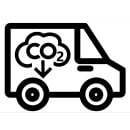In order to use this website you need to accept the use of Cookies , our Privacy Policy , and our Terms and Conditions.
Beginners Guide to Hydroponics
What is hydroponics?
Hydroponics is a form of agriculture where plant roots grow, not in soil, but in nutrient-enriched water. It’s a great method for growing food indoors and in small spaces. With the addition of automatic controls, it can be nearly maintenance-free.
Benefits of hydroponics
Extremely Rapid Plant Growth
Plants grown hydroponically will grow far more rapidly than plants grown in soil. This is mainly because the plants always have access to water, and they have all the nutrients they need to grow available to them at optimal levels.
Uses up to 95% less water
No water is wasted with hydroponics. A hydroponics system is a closed loop system and there is very little evaporation that happens. The only water used is the water consumed by the plant itself. Climate change is making dry areas even drier. Reducing our water consumption is critical to a more sustainable future.
Pesticide and Herbicide Free
Hydroponic systems don't have soil so they have a much lower chance of getting pests or diseases, and there are no weeds. This means that you don't need to spray any kind of pesticide or herbicide on your crops, making it much more environmentally friendly and healthier to eat.
No need to wash crops before eating
No soil means the roots are free from dirt, insects, and diseases, so you don't need to wash them before you eat them.
Environmentally Friendly, and uses Less fertilizer
A closed-loop system means that you can reuse the fertilizer within the water, and there is no release of nutrient rich water into the ecosystem. With traditional farming methods much of the fertilizer used is wasted and ends up in our rivers. This causes algal blooms and allows invasive vegatation to flourish within our ecosystem.
Uses less space, allowing for Urban Agriculture
Faster plant growth and the ability to use artificial lighting means that you can grow plants vertically within buildings stacked on top of each other on racks. This is called vertical farming. Vertical farming allows you to grow a massive amount of food in a very small space. You can have a farm right in the center of a city and be able to deliver fresh food to people without having to transport it all the way from outdoor farms - Fresher food, smaller carbon footprint.
Types of Hydroponic Systems

Drip
In a drip irrigation system, nutrient solution is pumped from a reservoir to the base of the plants by small drip lines. Plants are normally grown in Coco Peat / Perlite mixes or blocks of rockwool and a timer controls how often the watering occurs. It is the simplest of hydroponic systems, which is cheap to set up and highly scaleable up to greenhouse levels.

Deep Water Culture (DWC)
Plants grow directly in water, with an air pump and air stone keeping the water oxygenated. Advantage: Plant has access to as much water and nutrients as it needs, giving you maximum growth. Automated system means you don't need to water the plants every day. Disadvantage: Needs electricity at all times in order to run the air pump and keep the water oxygenated. If power goes off then the plants can die within hours. Need to keep the water temperature in the range of 17-20°C. Below 16°C plant growth slows down, and above 21°C the level of dissolved oxygen in the water becomes too low, and bacteria can start to grow on the roots.

Nutrient Film Technique (NFT)
Nutrient Film Technique, or NFT, is where a film of nutrient rich water runs over the plant roots. The roots have access to oxygen because the film of water has a large surface area and therefore oxygen can diffuse into the water quick enough. NFT systems usually consist of gutters or pipes where the plants roots grow in the pipes with a continous stream of water running down the pipes. NFT is typically used for leafy greens such as lettuce. Advantage: Can be used on a commercial scale in greenhouses, and also at home. Can be mounted against a wall and grown vertically where there is limited space. Disadvantage: Usually requires a person to build their own DIY system at home because there aren't many plug-n-play small-scale systems on the market.

Ebb and Flow / Flood and Drain
Ebb & Flow, or Flood & Drain hydroponics is a system where the plant growing area consists of a tray containing a high porosity growing medium such as gravel, LECA or rockwool, and a reservoir containing nutrient solution. Nutrient solution is pumped from the reservoir into the growing area until the entire tray is flooded. When the flooding stops, it drains back into the reservoir. This cycle is repeated multiple times during the day so that the roots are always covered with a thin film of nutrient solution, and they can get all the oxygen they need from the airspaces in the growing medium.

Aeroponics
In aeroponics, plants grow in air instead of a growing medium. The plants are usually put in small net pots, with the roots of the plants being sprayed with a mist of nutrient solution. This setup gives the roots maximum access to oxygen and nutrients. Aeroponics systems can produce very high plant growth rates - even better than Deep Water Culture systems.

Wick (Autopot Systems)
In wick hydroponics nutrient solution is pumped into a growing tray containing plants, which are usually in pots, where it then wicks up through the growing medium to the roots. As the plants use the nutrient solution it is replenished through the wicking action every time the tray is irrigated. A wick system is very simple and it can operate without any power. Autopot systems are one of the most popular types of wick hydroponic systems on the market, because they require very little effort to operate and are highly scaleable. It is the easiest setup to get started with.

Aquaponics
Aquaponics is a variation of hydroponics which includes the farming of fish within the system. In aquaponics, fish are grown in tanks and fed fish food as per normal. The fish excrete the food waste and this waste is then broken down by bacteria in the water. This releases the mineral nutrients from the fish waste into the water and fertilizes it. The fertilized water is then used as nutrient solution for the growing of the plants.
Key factors when growing hydroponically
There are a number of factors that influence plant growth in hydroponics systems that need to be maintained within in certain ranges in order to ensure healthy plant growth. To gain maximum benefit from growing hydroponically you need to strive to keep these factors as close to optimal as possible. Each type of plant or cultivar has it's own requirements.
Light
In general, the more light a plant can get the faster it will grow. There is an upper limit at which a plant can no longer use any more light and it can be get too much light and be burned. Under the usual indoor growing conditions light is normally the limiting factor and giving your plant more light would result in higher yields.
Water
Plants need water in order transpirate and draw up nutrients to its leaves. For most plants, the more water the plant has access to the better it will grow. If a plant is struggling to get water it can't grow to its full potential. Some plants, such as cacti, don't want lots of water.
Oxygen
Even though plants produce oxygen during photosynthesis they still need oxygen to live. This is particularly important for the plant's roots because they don't have direct access to the air. The water that is surrounding the plant's roots needs to have sufficient oxygen dissolved in it in order for the roots to absorb it. Oxygenating of the nutrient solution can be done by pumping air into the solution through an air stone.
Nutrients
Depending on the type of plant you are growing and the growth stage that it is in, your plants will need different concentrations of nutrients in order to grow optimally. For most plants like leafy greens and vegetables a general purpose hydroponic nutrient mix will work. For plants like Cannabis, where you are trying to get the maximum possible yield you can get, there are multi-part nutrient mixes that have been formulated specifically for the growing and flowering stages of the plant.
pH
pH is a measure of the concentration or potential of Hydrogen ions in a solution. The pH scale is logarithmic, meaning that each number difference is a 10x concentration difference. pH can range between 0 and 14. A solution with a low pH (pH 1) is acidic and a high pH (pH 14) is basic. Water should have a pH of 7.0 - 7.5. Each plant species has different pH ranges that it needs in order to grow optimally. If the pH of the nutrient solution is out of range then the plant won't be able to absorb nutrients properly and will suffer nutrient deficiencies. Plants can grow within a pH range of 5.5-6.5, but this is highly dependent on the species and each plant has different requirements.
EC/TDS
EC is a measure of Electrical Conductivity and is measured in mS/cm (millisiemens per cm), and TDS is the Total Dissolved Salts in a solution, measured in PPM (Parts Per Million). The TDS is calculated directly from the EC using a conversion factor, which is usually 0.7. The EC/TDS is used as an indication of the concentration of the nutrient solution. A high EC or TDS means that the concentration of your nutrient solution is high.
Temperature
All plants have an ideal temperature range within which they grow optimally. When the temperature is too low for a plant, its metabolism and growth will slow down. When the temperature is too high, the plant will suffer heat stress and will wilt up until the point where it dies.
Humidity
Relative Humidity (RH) is a measure of the amount of water in the air relative to the total amount of water that the air can hold, at a given temperature. Humidity is given in a percentage value, e.g. 68%. The higher the temperature the more water the air can hold. If the humidity is 100% then the air is fully saturated with water vapour. If the humidity is 100% and the air cools, then it the water will start to precipitate as dew, mist or rain. The higher the humidity the easier it is for fungi to grow, and the more likely your plants are to get mildew or other fungal infections. It is best to keep the humidity within 40-60%, depending on what plants you are growing and the growth stage. Cacti prefer a lower humidity, and tropical plants a higher humidity.

